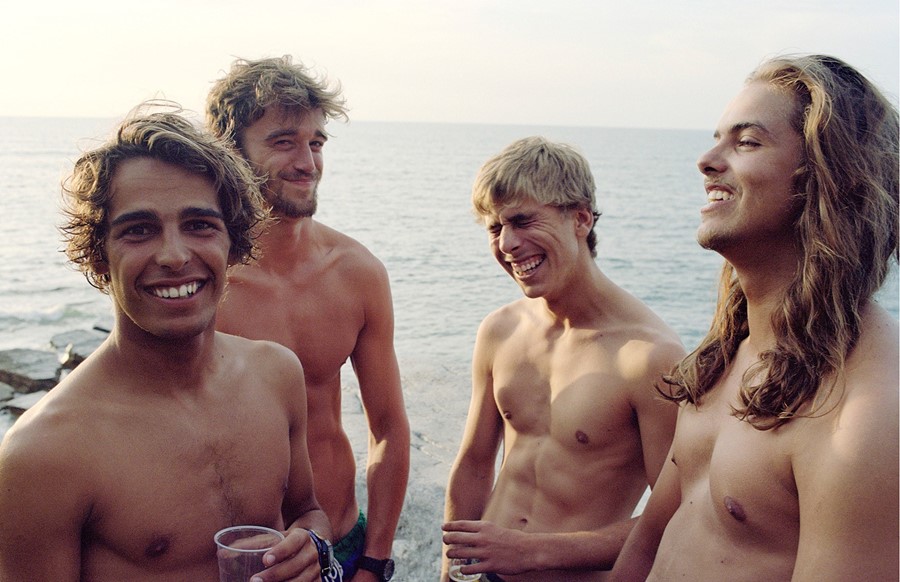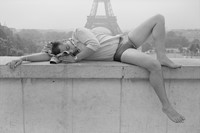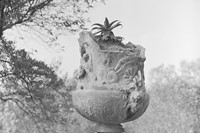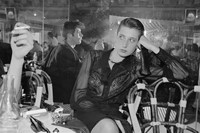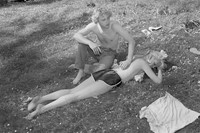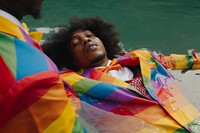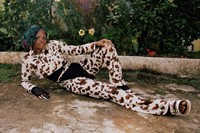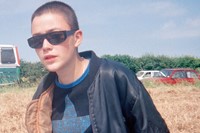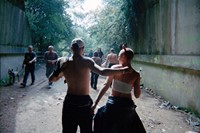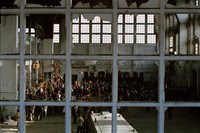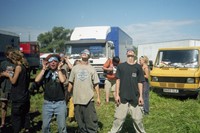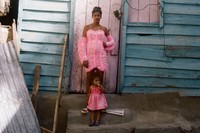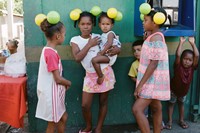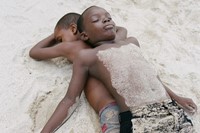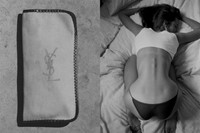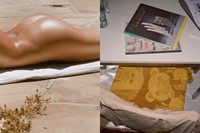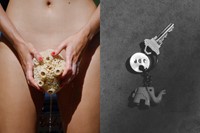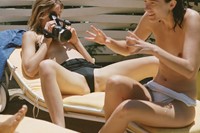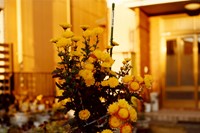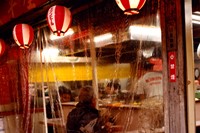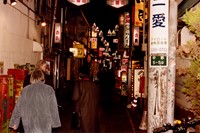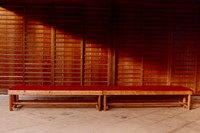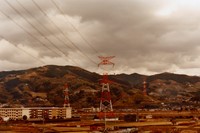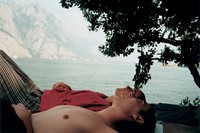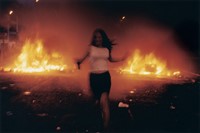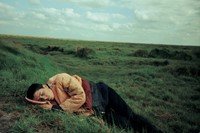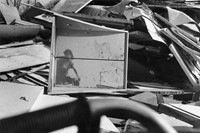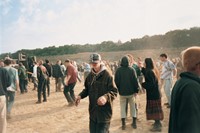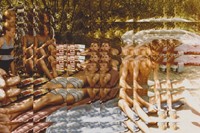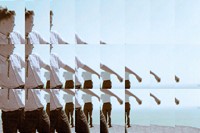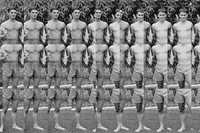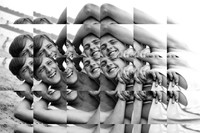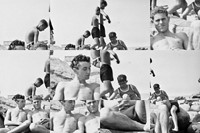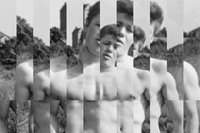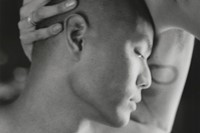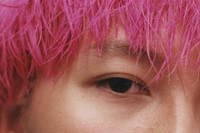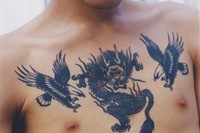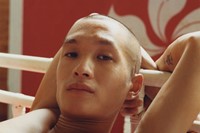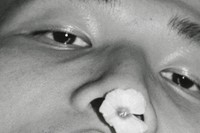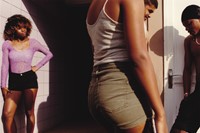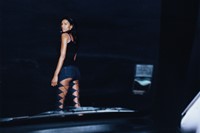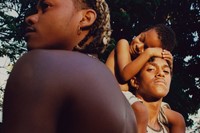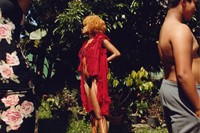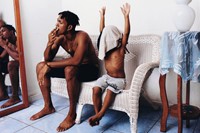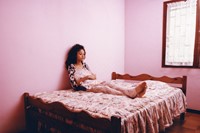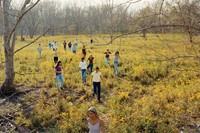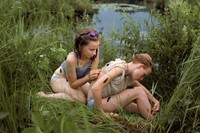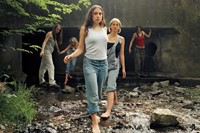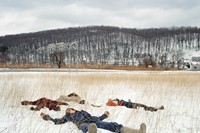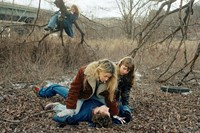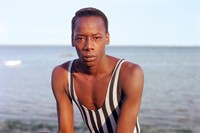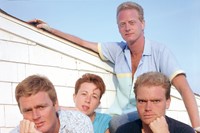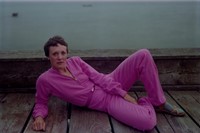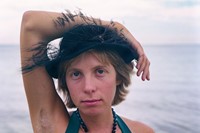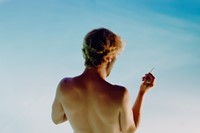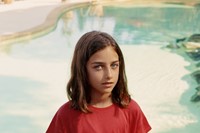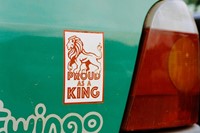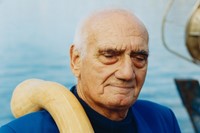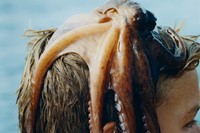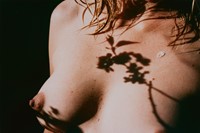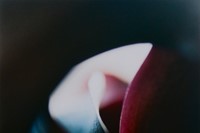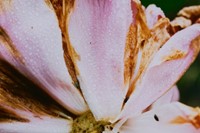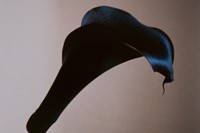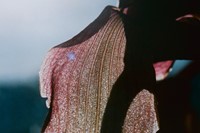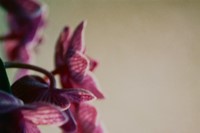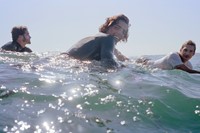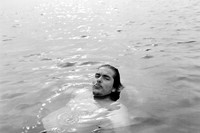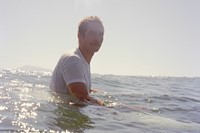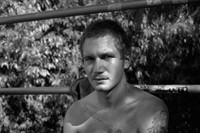Travel to other countries and even decades with these 15 photo series, by the likes of Joel Meyerowitz, Vinca Petersen, Nadine Ijewere and Henrik Purienne
Love’s Labour by Sergio Purtell
Taken during the 1970s and 80s, Chile-born, New York-based photographer Sergio Purtell’s series Love’s Labour captures a sun-drenched rail journey across Europe in the height of summer. “Wandering made sense to me,” says Purtell of the series, which was recently published as a book by Stanley/Barker. “I left Chile for the US at the age of 18, fleeing an imminent dictatorship … When I got [to Europe], I was immediately reminded of my life in Santiago: the mannerisms, the customs, the architecture, the relaxed attitude towards life, the mornings in cafés nursing a cup for as long as one wanted.”
Tallawah by Nadine Ijewere
Born from a desire to explore her heritage, Nadine Ijewere’s Tallawah – which means “strong-willed, fearless, not to be underestimated” in patois – sees the photographer journey to Jamaica for the first time (Ijewere is of Jamaican and Nigerian descent). A collaboration with the hair artist Jawara Wauchope, the series centres on Wauchope’s dancehall-inspired hairstyles which encapsulate the spirit of the island and its people. “We both wanted to do something to celebrate beauty out there, that certain type of beauty where it doesn’t matter what age you are,” Ijewere told AnOther about Tallawah, which was presented as an exhibition at Cob Gallery alongside Dazed Beauty. “Jawara never just ‘does hair’, it’s very emotive – each hair style or creation has its own story to tell … We wanted to do this in a very sensitive way, where we allowed the people we were photographing to express themselves.”
Spiralled by Seana Gavin
Visual artist Seana Gavin was immersed in Britain’s rave scene during the 1990s, documented in a series of images in new book Spiralled, published by IDEA this year. Capturing the utopian spirit of the movement – born from a climate of Tory government austerity not unlike ours today – the spontaneous photographs depict the abandon of sound-system parties from Badalona to Brighton. “I hope [Spiralled] will give people a sense of what it was like to be immersed in that scene rather than from the perspective of an outsider,” Gavin told AnOther earlier this year. “I hope it captures the sense of community, adventure and freedom that embodied that scene.”
Pampara by Renell Medrano
New York-born and -based photographer Renell Medrano’s first European exhibition, Pampara, saw her explore her family heritage in the Dominican Republic, where her parents are originally from. “I wanted to go back and pay homage to my parents’ culture,” Medrano told AnOther, “and shine a light on what is part of me: the people, the culture, the freedom and the innocence [in the Dominican Republic]. I thought, how come I have never photographed what is so special and a part of me?” Pampara saw Medrano photograph people of all ages in San Cristóbal and Santiago, capturing the warmth and energy of the country.
Jeux de Peau by Purienne
Perhaps the most sensual photo book of its year of publication, 2019, Henrik Purienne’s Jeux de Peau (published by IDEA) sees the image-maker document a summer in his Los Angeles home – and the various friends and models who pass through it. A sun-soaked vision of California at its most alluring, Purienne says the images are an attempt to capture his domestic life – “the subjects and objects within my environment and interior space as a metaphor”. “I love documenting real moments with friends,” he told AnOther. “Most often it is a case of all elements lining up to the point where I simply have to pick up my camera.”
SIGNS by Lucie Rox
Presented as a zine entitled SIGNS, Lucie Rox’s 2019-published, 2017-shot photo series saw the Paris-born photographer capture the “quiet, soft” side of life in Japan. Born out of a desire to depict the joy of exploring new places, the captivating images find inspiration Roland Barthes’ seminal 1970 text Empire of Signs, in which the author meditates on Japanese culture from the perspective of a European tourist. “For me, while making the zine, it was very important to stress how as a European having been there for two weeks, I couldn’t pretend to say anything about Japan as a place or a culture,” Rox said at the time. “Similar to Barthes’ position, Japan merely offered me a ‘situation of writing’ – or of taking those images – by its newness to me and its constant foreign symbolism, starting with the alphabet.”
No System by Vinca Petersen
“It was literally a family photo album,” Vinca Petersen says of her 1999 book, No System, which was republished earlier this year. Following Petersen’s immersion in the nomadic rave scene in Europe for over a decade in the 1990s, the book collates letters, diary entries and souvenirs from the definitive era, as well as a series photographs which Petersen calls “a kind of brochure for an alternative way of living”. “To be able to encourage people to seek a way of living which is slightly outside the obvious, in whatever form,” she told AnOther of why she first published the book. “I think it gives them a strength to deal with life.”
Suddenly, Last Summer by Edouard Taufenbach
Suddenly, Last Summer – first shown as an online exhibition in the wake of coronavirus lockdowns earlier this year – sees collage artist Edouard Taufenbach reimagine the photographic archive of Sébastien Lifshitz, a documentary filmmaker whose 2012 film Les Invisibles told the stories of 11 French men and women, all of whom are over the age of 70 and identify as gay. In the process, Lifshitz amassed numerous unseen photographs depicting “leisure and pleasure” of France’s LGBTQ+ community from the 1940s to 1980s. Taufenbach’s collages reflect and refract these sunny images, providing a rare vision of queer joy during decades when the subjects remained oppressed in their quotidien lives.
Boys of Hong Kong by Alexandra Leese
Alexandra Leese’s series Boys of Hong Kong aims to dismantle harmful stereotypes that exist around Asian masculinity. The Hong Kong-born, London-based photographer’s series explores the beauty and diversity of the city’s young men, “from schoolboys to artists, illustrators, skaters, bikers and tattoo artists”, as Leese explained to Another Man when the photographs were exhibited. “They represent a range of sexualities and backgrounds. Throughout this project, I observed that this generation of young men are particularly self-aware; they are aware of the common stereotypes that Hong Kong or Asian men face, with many of them consciously or unconsciously moving away from those ideas.”
La Kaz by Fabien Vilrus and Nicolas Guichard
In Réunionese Creole – the main language, alongside French, spoken on the island of Réunion – the phrase ‘la kaz’ means ‘home’. It is also the title of a collaborative photo series between photographer Fabien Vilrus and the designer Nicolas Guichard, which saw the duo – who are both from Réunion – capture Guichard’s latest collection amid the architecture, landscapes and people they grew up around. “It was very important for us to go home for this project – we felt the need to create something there because there’s a lack of projects which show our island and other islands in general,” Guichard and Vilrus explained of how La Kaz came about. “Especially in visual arts, we are not represented enough and we wanted people from France and other European countries to understand where we are from and the potential that we have.”
Girl Pictures by Justine Kurland
Justine Kurland’s captivating series Girl Pictures was first published 20 years ago; this April, a monograph of the photographs was published by Aperture. The transporting images, taken on journeys across America, see the photographer hone in on unruly groups of teenager girls amid vast and desolate rural landscapes. “Being a teenager means you haven’t yet fully signed on, politically, culturally or economically,” Kurland told AnOther on the book’s release. “If you simply refuse to grow up and toe the line – why would you want to, anyway? – you can create a world for yourself, one that’s bearable to live in.”
Provincetown by Joel Meyerowitz
Joel Meyerowitz’s Provincetown – published in 2019 – collates the American photographer’s images of the Cape Cod town in the 1980s. The arresting portraits capture the seaside locale’s residents and visitors – many of whom were LGBTQ+ – posed along the town’s beachfront. “It’s at the end of Cape Cod, and when you go to the land’s end, it’s as if everybody there learns to be tolerant and accepting and absorbing,” the photographer told AnOther. “If I saw anyone that had some kind of projection of their humanity or interiority in some way, I was drawn to them. I would cross the street or walk over the sand and say ‘I need to make a portrait of you’.”
Fashion Eye: Saint-Tropez by Osma Harvilahti
Published as part of Louis Vuitton’s Fashion Eye series – which sees fashion photographers invited by the house to document a country or city around the world – Osma Harvilahti’s study of Saint-Tropez focused on the everyday, local aspects of the French town rather than its glamorous riviera. “In a way, it is an exploration of these senior people and the vegetables from the market, they’re kind of jumping in and out from the pages of the book,” Harvilahti told AnOther, referring to the local settings and characters which appear throughout the captivating, sun-drenched series. “And then there are kids – I guess I was trying to capture something real, something that is timeless.”
Flowers by Lina Scheynius
Published in a newspaper format, Lina Scheynius’ 2018 project Flowers is an ode to all things floral. The Swedish photographer – who recently published her previous 11 photo books together as one project, entitled My Photo Books – chose to focus on flowers, both individual stems at home and those she encountered outside, and documented whichever blooms she felt most drawn to. “I tried to avoid looking at other flower photography while working on Flowers; I didn’t do any research at all,” she told AnOther. “I thought afterwards that maybe I should have written down the flowers’ names, but it was purely based on instinct and beauty; something I was drawn to, nothing more.”
Surf’s Up by David Ledoux
French photographer David Ledoux has long been preoccupied by subculture. While he’s based in Paris, this preoccupation led him to the south-west of France – specifically the stretch of coast between Hossegor and Saint Jean de Luz – to photograph the region’s surfers, culminating in a series of profoundly dreamy photos of four surfing communities. “They each have favourite a surf spot and can be quite territorial about them,” he says of these groups. “Some even have names, such as ALC, Tropical Youth and Nonsense … ALC have been around since 2004 and they get ‘ALC’ tattooed on their body. They’ve built a beach house from wood found they’ve found on the beach. I love the alternative lifestyle of it, and the freedom it represents.”
